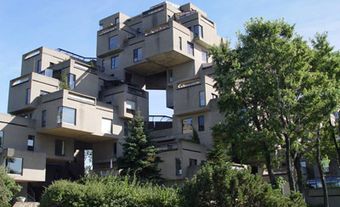Cecil Scott Burgess
Cecil Scott Burgess, architect, professor (b at Bombay (Mumbai), India 4 Oct 1870; d at Edmonton 12 Nov 1971). Cecil Scott Burgess helped bring English Arts and Crafts architectural and design ideals into Canada. His public lectures provided a bridge between the profession and the public.
From India, he moved with his family to Edinburgh in 1871. Burgess was a promising pupil, earning a gold medal from the Royal High School in Edinburgh and then apprenticing for four years with Sir George Washington Browne, leading to associate status in the Royal Institute of British Architects (RIBA). Burgess worked in Edinburgh, York, London, and Liverpool. He also travelled in Europe, studying and sketching.
Burgess encountered ARTS AND CRAFTS teaching while taking classes in decoration at the Edinburgh School of Art while he was apprenticing with Browne. Burgess was inspired by both William Morris and John Ruskin, in particular by their views on the social value of meaningful work and people's innate need for beauty in their lives. These attitudes became firmly entrenched in Burgess's outlook, and he promoted the ideals of arts and crafts architecture throughout his life. His drawings are beautiful in their own right, and range in subject from Greek statues to English country houses.
While travelling in 1903, Burgess met fellow Scottish architect Percy NOBBS, who was just about to take up a position teaching ARCHITECTURE at McGill University. Nobbs encouraged Burgess to move to Montréal, where he assured Burgess that he could obtain work as an assistant draftsman at McGill. Burgess moved to Montréal later that year and not only worked at McGill (and for Nobbs in various capacities) but also obtained independent commissions, such as designs for the Boys Farm and Training School in Shawbridge, Qué.
When Nobbs & Hyde obtained the commission to design the University of Alberta, Nobbs recommended Burgess as superintending architect. Burgess was appointed professor of architecture at the University of Alberta in 1913, and supervised Nobbs's design for the Arts Building (1915). As university architect, Burgess designed a number of University of Alberta buildings, including Pembina Hall, staff residences, the south wing of the University Hospital, University Farm buildings and cottages, and Varsity Rink, the university ice arena (1927).
Burgess served as the associate architect for the Edmonton Natural Resources Building (now the Bowker Building). Other designs, all constructed in Alberta, included the Birks Building, numerous private residences, memorials, and park gates. Burgess remained a professor at the University of Alberta until 1940, except for a brief interruption for service with the Canadian Expeditionary Forces during World War I. After war service, Burgess returned to Edmonton and resumed his pre-war duties.
Burgess's architecture is conservative without being dull, restrained while possessing strength of character. His architectural designs are informed by a deep knowledge of historical precedent, evident both in his sketches of historical buildings and in his many lectures. His designs are typically characterized by order, symmetry and restraint. Window bases line up with roof lines; doors and windows are given graceful stone surrounds; appropriate ornament enlivens the buildings.
Burgess had wide-ranging interests and epitomized the role of the engaged, publicly active academic. He lectured on town planning, architecture, and history, both in lecture halls and later on the radio. He served as president of the Alberta Association of Architects in 1923 and 1924, and in 1929 became the vice-president of the Edmonton Town Planning Commission. Recognized in 1930 as a fellow of the Royal Architectural Institute of Canada (RAIC), in 1933 he became a fellow of the RIBA. Following retirement in 1940, he designed several hospitals in Alberta (for example, Elnora, in 1946), and continued to give numerous public lectures on architecture and urban planning. Many of these were printed in public and professional journals.
Burgess received an honorary doctorate from the University of Alberta in 1958. His extensive archives, now housed at the University of Alberta, are among the most comprehensive of any architect of his generation.

 Share on Facebook
Share on Facebook Share on X
Share on X Share by Email
Share by Email Share on Google Classroom
Share on Google Classroom

